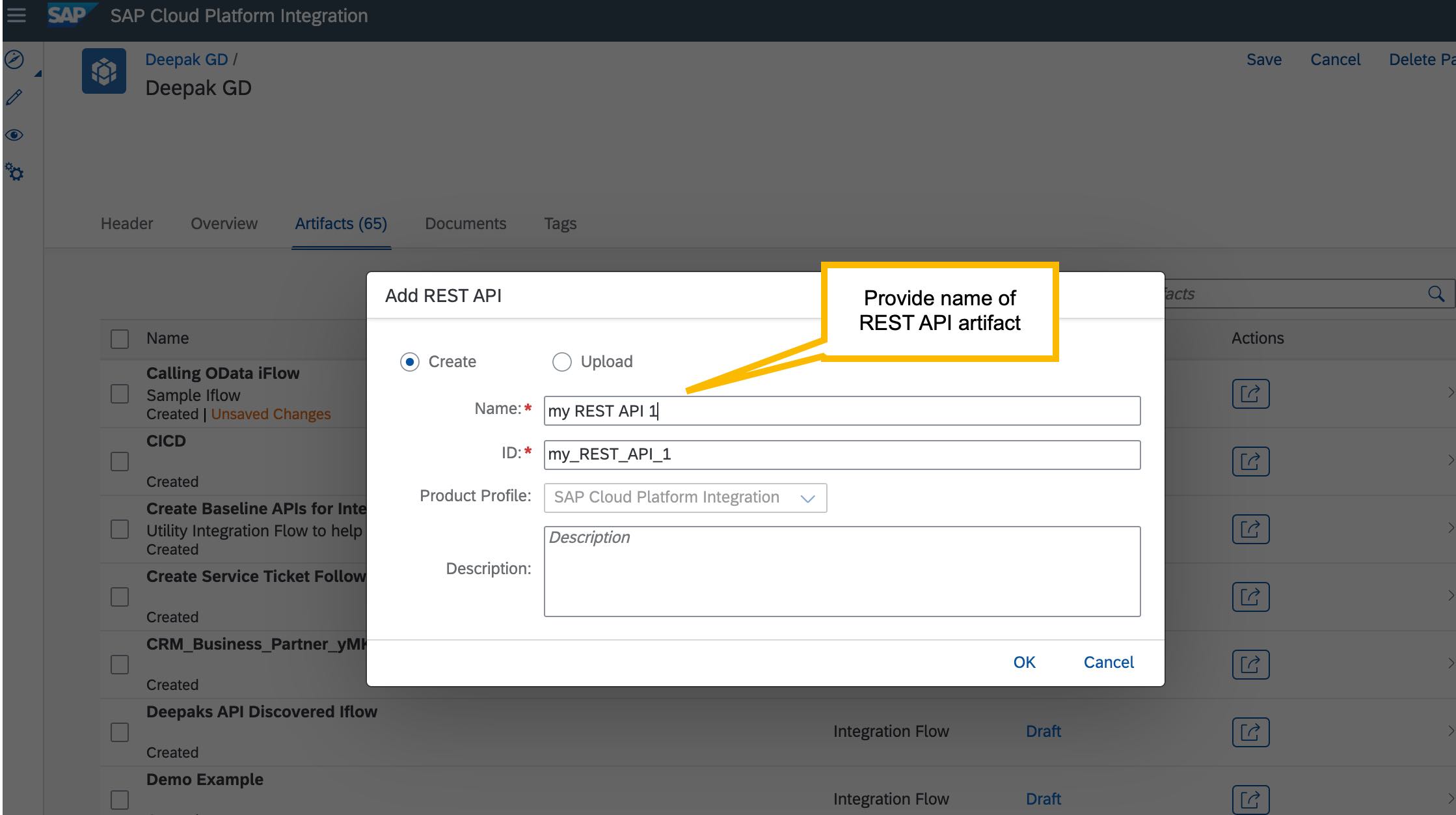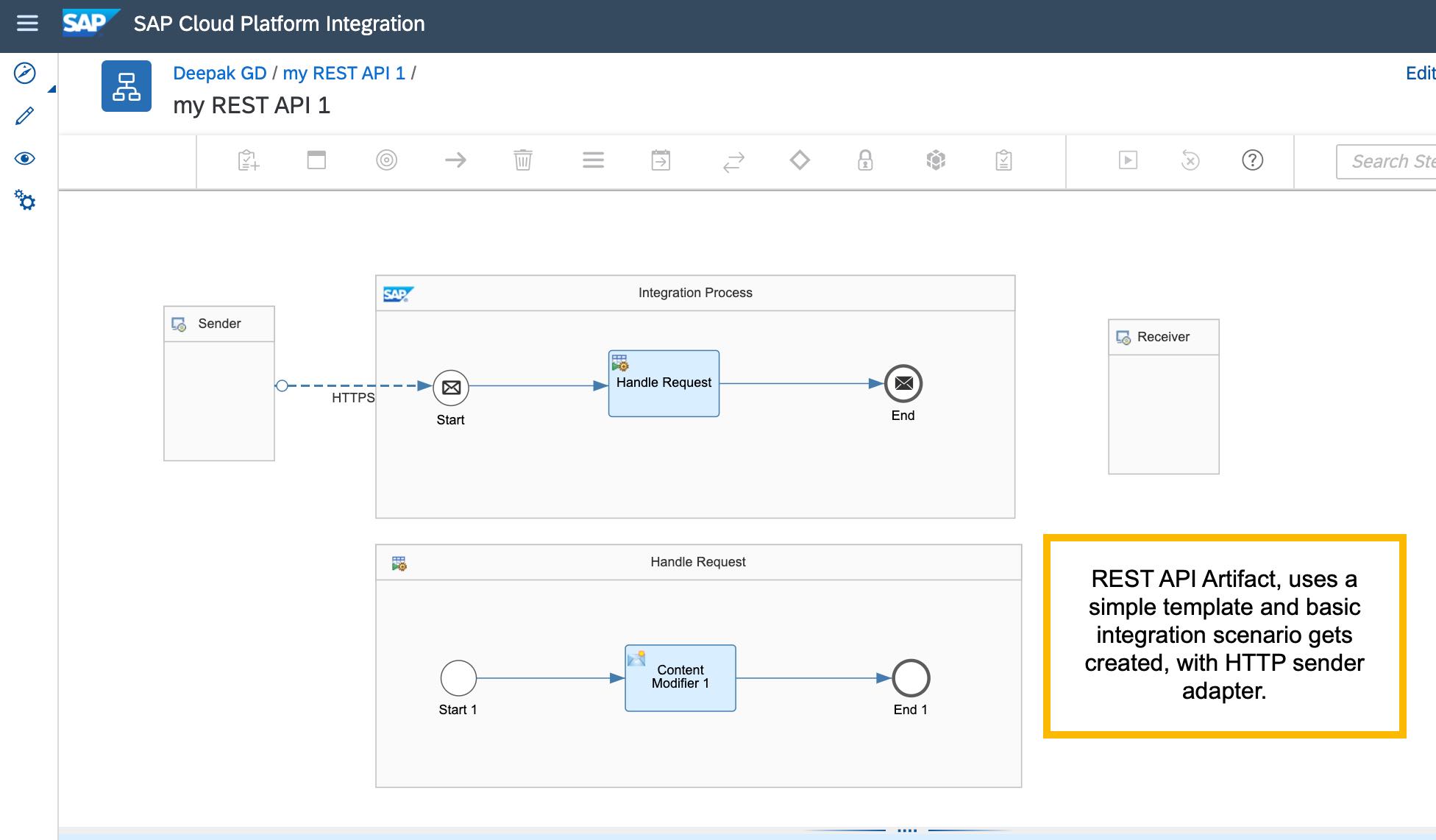
- SAP Community
- Products and Technology
- Technology
- Technology Blogs by SAP
- SAP Cloud Integration – Step towards Building API ...
Technology Blogs by SAP
Learn how to extend and personalize SAP applications. Follow the SAP technology blog for insights into SAP BTP, ABAP, SAP Analytics Cloud, SAP HANA, and more.
Turn on suggestions
Auto-suggest helps you quickly narrow down your search results by suggesting possible matches as you type.
Showing results for
Associate
Options
- Subscribe to RSS Feed
- Mark as New
- Mark as Read
- Bookmark
- Subscribe
- Printer Friendly Page
- Report Inappropriate Content
01-08-2021
3:50 AM
Update
The below described API artifacts availability depends on your tenant licensing model, more information at https://help.sap.com/viewer/368c481cd6954bdfa5d0435479fd4eaf/Cloud/en-US/997501da152d419d96c92f7bfbd...
Update
Due to unavoidable reasons, the release of below mentioned feature is postponed to next release cycle. Hence, the below mentioned feature will be available with SAP Cloud Integration version 3.34.*/5.18.*/6.10.* . Updated the blog post's introduction part accordingly. Initially it was planned to release as part of version 3.33.*/5.17.*/6.9.*.
Only renamed type OData API from OData Service will reflect in 3.33.*/5.17.*/6.9.*.
Introduction
SAP Cloud Integration, one of the capabilities of SAP Integration Suite, brings a new feature from version 3.34.*/ 5.18.*/ 6.10.* which takes a step towards strengthening design of API based integration scenarios. In this blog post, information about this new feature will be provided.
REST API, SOAP API and OData API
Users can now create a new integration artifacts of type REST API, SOAP API and OData APIs. OData APIs are the rename of previous OData Services artifacts. These artifacts generate a default integration template which can be further extended to meet API based integration needs.

API Artifacts Menu
Note: We are fixing the sorting of these menu entries 🙂
Once you select the menu entry, creation dialog will popup
REST API
Select REST API to create an REST API based integration scenario.

Create REST API Artifact
Once you create REST API integration scenario gets created

Clicking on the artifact, integration with basic template is displayed. For REST API, HTTPs sender adapter is added in the template.

REST API Integration Template
Add the required endpoint address name fo the HTTP sender adapter. The template can be further extended to fit your API integration scenario

REST API with HTTP Sender Adapter
SOAP API
Select SOAP API to create an SOAP API based integration scenario.

Create SOAP API Artifact
Once you create, SOAP API integration scenario gets created

Clicking on the artifact, integration with basic template is displayed. For SOAP API, SOAP 1.x sender adapter is added in the template.

SOAP API Integration Template

SOAP API with SOAP Sender Adapter
OData API
Note: OData API is the renamed type of previous OData Service
Select OData API to create an OData API based integration scenario.

Create OData API Artifact
Once you create, OData API integration scenario gets created

Clicking on the artifact, integration with basic template is displayed. For OData API, OData V2 sender adapter is added in the template.

For OData API artifact, a default method and a sample EDMX file is generated in the template

Monitoring
Once you extend the API templates and complete the integration scenario, you can save and deploy them.
Deployment View
To view the deployed artifacts, as of now, monitoring doesn't provide a default tile to view the deployed artifacts, you need to create a tile to view them.
Add a tile under Manage Integration Content

Add new tile in Manage Integration Content section

Select API type for tile


Clicking on the tile displays the details
Message Processing view
To view the message processing status for APIs, you need to add the tile under Monitor Message Processing section

New tile under Monitoring Message Processing section


If user invokes API endpoint, e.g., a REST endpoint from POSTMAN application, then message processing status will appear in this new tile

Invoke REST API endpoint


Details of the message processing details
Note:
- If you have already deployed the previous OData Service artifacts and created a tile for it, then such previously created tile will be appear as OData APIs.
- You can repeat the same process to get a tile for SOAP API artifacts by choosing SOAP API type for new tile
Next Steps
As mentioned, this feature is a step towards building API based integration scenarios. And there are more supporting enhancements coming.
Considering API Definition
As of now, you might have noticed, in REST API and SOAP API based integration scenarios doesn’t take API definition (e.g., Open API Spec/Swagger JSON for REST API) as source. In the next upcoming increment, implementing an integration considering API definition file shall be supported.
Enhancing the templates
For API based artifacts, the sender adapter selection and validation will be enhanced to match the type of artifact, e.g., only HTTPs adapter as sender for REST API artifact.
Summary
This is an initial step towards strengthening SAP Cloud Integration capability to support building API based integration scenarios. As of now, they are integration artifacts with basic templates, but going forwards, more and more API related capabilities shall be added.
- SAP Managed Tags:
- SAP Integration Suite,
- Cloud Integration
Labels:
24 Comments
You must be a registered user to add a comment. If you've already registered, sign in. Otherwise, register and sign in.
Labels in this area
-
ABAP CDS Views - CDC (Change Data Capture)
2 -
AI
1 -
Analyze Workload Data
1 -
BTP
1 -
Business and IT Integration
2 -
Business application stu
1 -
Business Technology Platform
1 -
Business Trends
1,658 -
Business Trends
91 -
CAP
1 -
cf
1 -
Cloud Foundry
1 -
Confluent
1 -
Customer COE Basics and Fundamentals
1 -
Customer COE Latest and Greatest
3 -
Customer Data Browser app
1 -
Data Analysis Tool
1 -
data migration
1 -
data transfer
1 -
Datasphere
2 -
Event Information
1,400 -
Event Information
66 -
Expert
1 -
Expert Insights
177 -
Expert Insights
293 -
General
1 -
Google cloud
1 -
Google Next'24
1 -
Kafka
1 -
Life at SAP
780 -
Life at SAP
12 -
Migrate your Data App
1 -
MTA
1 -
Network Performance Analysis
1 -
NodeJS
1 -
PDF
1 -
POC
1 -
Product Updates
4,577 -
Product Updates
340 -
Replication Flow
1 -
RisewithSAP
1 -
SAP BTP
1 -
SAP BTP Cloud Foundry
1 -
SAP Cloud ALM
1 -
SAP Cloud Application Programming Model
1 -
SAP Datasphere
2 -
SAP S4HANA Cloud
1 -
SAP S4HANA Migration Cockpit
1 -
Technology Updates
6,873 -
Technology Updates
417 -
Workload Fluctuations
1
Related Content
- FAQ for C4C Certificate Renewal in Technology Blogs by SAP
- Lowest SAP ECC version that can be integrated with SAP BTP through Cloud Connector in Technology Q&A
- how to read the name of groovy script sap cloud integration cpi in Technology Q&A
- How to use AI services to translate Picklists in SAP SuccessFactors - An example in Technology Blogs by SAP
- Magic Numbers : A Solution to Foreign Characters in SAP CPI in Technology Blogs by Members
Top kudoed authors
| User | Count |
|---|---|
| 33 | |
| 25 | |
| 10 | |
| 7 | |
| 7 | |
| 7 | |
| 6 | |
| 6 | |
| 5 | |
| 4 |